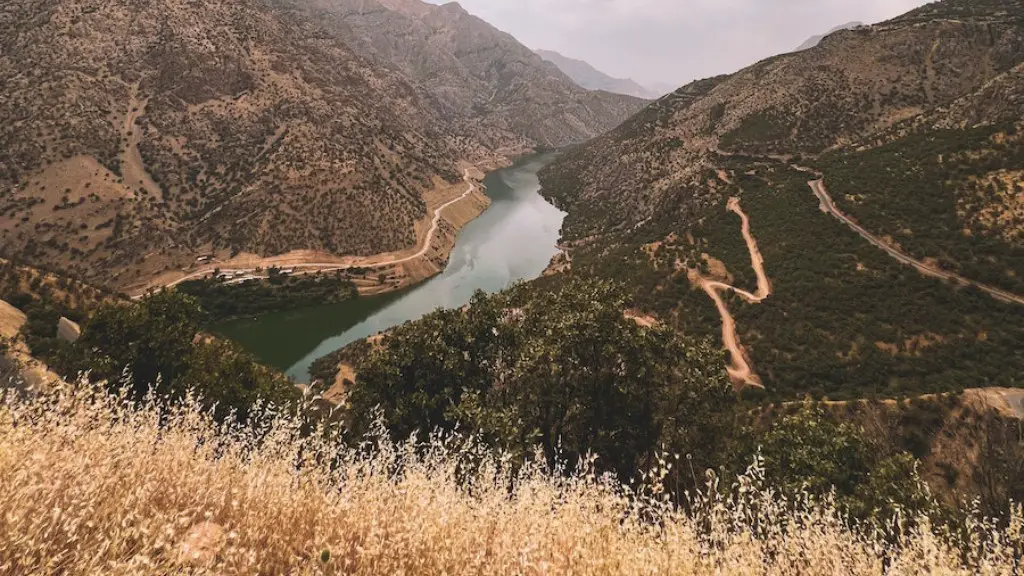The Mississippi River is an important water source for millions of Americans, with recreational activities, transportation, and various industries relying on its waters year-round. At the same time, the vastness and depth of its waters can pose a number of hazards. Despite its vital importance to the United States’s citizens and economies, learning more about how dangerous the Mississippi River can be is a helpful way to
avoid potential catastrophe.
The Mississippi River has been cited as one of the most dangerous waterways in the world due to a combination of human activities and natural features. From the headwaters in Minnesota to its outlet at the Gulf of Mexico, the river’s notorious floods, navigation hazards, unpredictable currents, and strong rapids can sink rafts and other boats if people aren’t careful. Other possible sources of danger for foot and boat traffic include swift undertows, fast-moving barges, and hazardous sunken vessels or cargo.
The Mississippi River is also famous for its flooding, a problem that is further exacerbated by the region’s heavy agricultural runoff. These often-destructive floods have caused millions of dollars in property damage, the loss of numerous lives, and the displacement of countless individuals over the years. Flooding across the entire Mississippi River Basin is especially severe due to its vastness, spread of flat land with high rates of precipitation, and numerous dams and reservoirs that can cause water levels to rise quickly.
Still, the danger of the Mississippi River isn’t limited to flooding. The depth of its channels and the build-up of sediment can camouflage potential obstacles and hidden features, making it easy to lose track of the river’s edges and make unsafe boating mistakes. At the same time, the surface of the water can hide treacherous items such as submerged cars, boats, rocks, and logs.
Regarding its human element, the river is regularly filled with a variety of motorized vessels, many of which are operated by inexperienced or unqualified captains. Additionally, inexperienced swimmers or boaters can easily be hurt or killed by accidental collisions or falls. In summary, the importance of using caution and obeying safety regulations when engaging in recreational activities around the Mississippi River cannot be understated.
Ways to Combat Danger
Taking action to reduce the danger of the Mississippi River is a worthwhile endeavor considering its role in daily life across the US. One of the best ways to reduce danger is to pay attention to local warnings, weather forecasts, and flood alerts. This includes keeping an eye on regional weather systems, ground levels, and potential targets for rain and flooding.
Additionally, it is important to never underestimate the power of the river: no matter how small the vessel, caution is wise. Before engaging in any boat activities, it is important to get into the habit of using life jackets, life boats, and other safety equipment for safety. Furthermore, it is important to consult a navigational chart for advice on local hazard areas and to plan a buoy-marked course before beginning.
Environmental conservation is another important way to combat the dangers of the Mississippi River. Pollution, littering, and hazardous materials can contribute to the river’s danger levels, while water conservation can help prevent flooding in certain areas and reduce the risk of pollution. Additionally, reducing human-created debris and pollutants in and around the river can help ensure the safety of recreational activities, such as swimming, boating, and fishing.
Finally, engaging in safe activities around the Mississippi River is important. Boaters, rafters, and other users should wear personal flotation devices at all times. Alcoholic beverages should also be avoided while on the water as they can impair judgment, leading to an increased chance of accidents. Likewise, people should never attempt to swim in fast-moving areas or areas with strong undercurrents, as these can be extremely dangerous.
Adapting for Floods
Floods are an integral part of life along the Mississippi River as well as throughout the rest of the US, so it’s important to be prepared. In some areas, flooding can cause severe damage to property and in severe cases, loss of life. As a result, it’s important for communities and individuals living near the river to take steps to minimize the potential hazard.
For instance, individuals living in flood-prone areas can consider raising their houses or constructing dikes and levees to help prevent the water from entering their homes. Further, they should always keep an eye on local, state, and federal warnings issued during times of serious flooding. In some cases, it is even possible to obtain flood insurance, which can help to cover potential losses in the event of a disaster.
The US government has also taken steps to help reduce the impact of flooding in certain regions. For example, in recent decades, the US Army Corps of Engineers and the US Environmental Protection Agency have started to take measures to restore the natural wetlands along the Mississippi River. The goal is to create additional areas where river water can naturally pooled, helping to mitigate the amount of flooding in populated areas.
How to Report River Issues
In the event that any suspected danger or other issue is spotted in the Mississippi River, there are methods for reporting it to the necessary authorities. In the case of hazardous materials, oil, and hazardous waste spills, the US Coast Guard should be contacted immediately so that the necessary actions can promptly be taken. When encountering navigational hazards, such as a damaged bridge, bystanders can contact their local Coast Guard station.
Also, individuals who spot damaged buoys or other equipment related to navigation can contact their area’s Coast Guard Auxiliary. In cases related to recreational activities, such as illegal drinking on the water or unsafe boating, it is best to contact the nearest game warden or other state law enforcement. Boaters are generally expected to keep a designated watch on the river, and to be aware of the potential hazards around them.
Safety Tips for Swimmers
Given the risk of strong undertows, unpredictable currents, and rapid changes in water level, it is important for swimmers and other river users to exercise extreme caution when engaging in any activities on the Mississippi River. It is especially important for parents to ensure their children know the safety regulations for swimming in strong and unpredictable waters.
To begin, it is advised to always swim with a buddy no matter the level of expertise. Furthermore, swimmers should seek out designated swimming areas with lifeguards and designated help stations. Before taking a dip, swimmers should check with the authorities regarding pond depth, any submerged objects, and the presence of any dangerous creatures like water snakes or alligators.
At the same time, swimmers should take advantage of the safety equipment available on the beach, such as life rings. Along the riverbanks, marked trails are essential for avoiding risky water areas, while it is important to remain aware of possible changes in water level and sudden strong undercurrents. It is also advised to always wear a life jacket, no matter the depth of the water.
Consistent Maintenance of River Equipment
To make the most of the Mississippi River safely, consistency in maintenance of related equipment is key. Safety equipment, such as life vests, boats, outboard motors, and life rafts should be inspected regularly for corrosion or wear. Similarly, the areas around the river should be maintained regularly such as removing debris, filling in potholes, and replacing outdated equipment.
In addition to regular maintenance, it is important to be aware of any laws or regulations regarding motorboats and related activities. Many states have set maximum speeds for vessels, while others require certain types of facilities, such as mooring systems or floating docks. It is also necessary to register any motorized boats with the proper authorities and adhere to any safety guidelines for operating them.
Those using the Mississippi River for recreational activities should also stay aware of the local environment, conserving the environment and avoiding any damage due to activity. This includes not anchoring a boat too close to formations or logs, as well as avoiding any contact with local wildlife or plant life. Doing so not only helps the river but also reduces the chance of personal harm.
Aligning With the River
The Mississippi River is an important natural resource, providing advantageous conditions for trade, recreational activities, and other services. To make the most of these benefits, it is necessary to take action and become familiar with safety guidelines and regulations in order to reduce the danger. Doing so helps promote the health of the river and surrounding landscape, while providing added security to the lives of all those who use the river.
By understanding the river’s potential hazards, adopting necessary safety measures, and working together to preserve the environment, communities across the US can reap the rewards of the Mississippi River for years to come.





